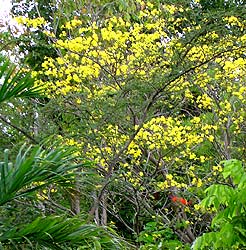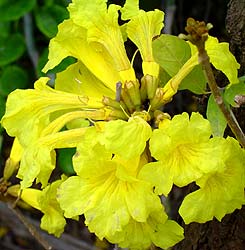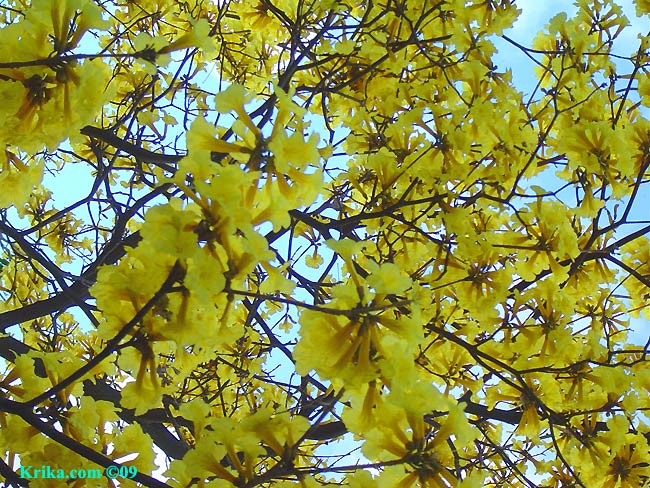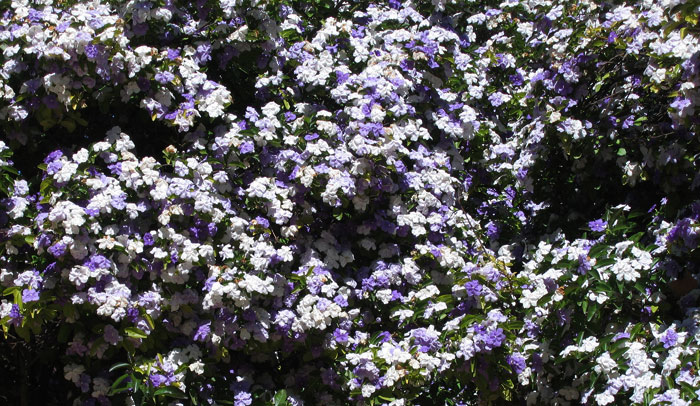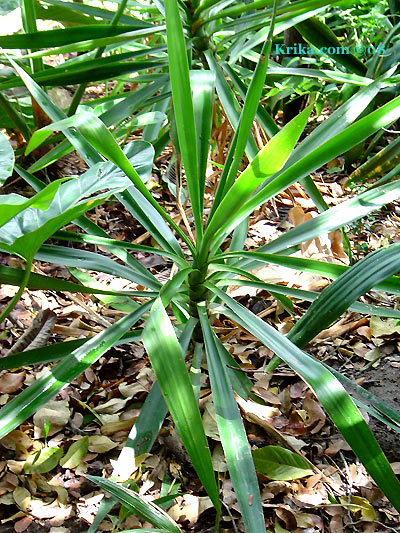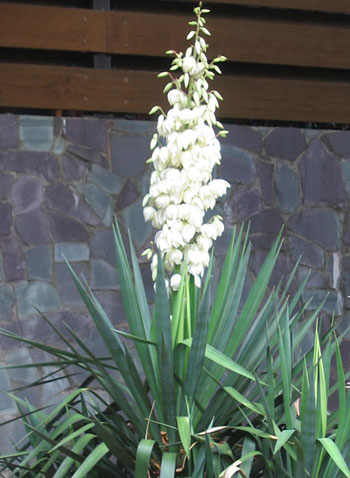| GreenGardeningCookingCuring.com | Y
PAGE |
| HOME |
| Tour Our Destination Websites | Taxco-Today.com | Oaxaca-Today.com | Montserrat-Today Site |
| See our silver designs at Krika.com | Read our travel stories and other tales at Krika.com |
|
|
| Yard Long Bean See The "B" Page BEANS -- Asparagus Bean | |||
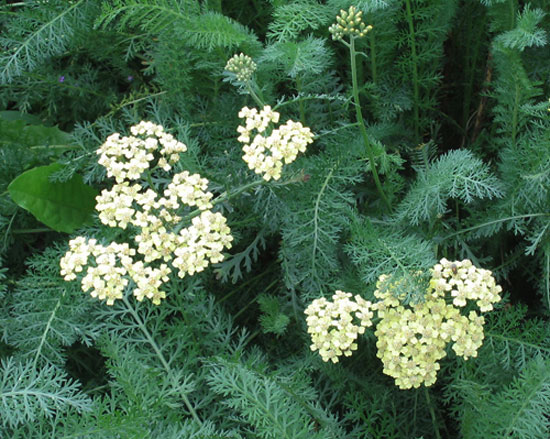 **Yarrow Achillea
millefolium **Yarrow Achillea
millefoliumThis is an appealing relatively low growing plant that for some time I believed to be some sort of feathery rather small fern. I loved having it in the garden and always seemed to be traveling when it bloomed so I never got to see that it wasn't a fern. Benefits: Yarrow leaves and flowers have been used medicinally to relieve fever and in Europe it was sometimes used as a tobacco substitute. Apparently it also serves well as a "compost activator." From: Europe and Western Asia Photographed: To the right at the Roger Williams Park Botanical Center in Rhode Island in 2013. Planting and Care: This is a hardy plant in a warm climate and does well also in temperate climates. I found it able to handle a sunny place in the garden, but I suspect it will also do well in a semi-shady area. Give it routine rainfall or watering and it will do just fine. Text & Photographs ©KO 2010 and ©Krika.com 2014/2018 |
|||
 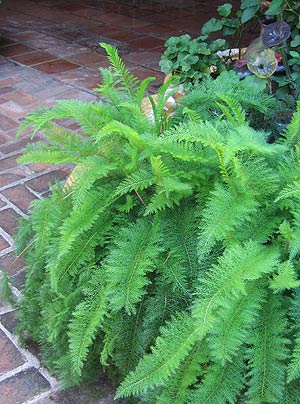 Photographed: On
the left in our sunny deck garden at our former home in
Montserrat in 2009 and on the right at
the Hotel Atitlan on Lake Atitlan in Guatemala in 2010. Photographed: On
the left in our sunny deck garden at our former home in
Montserrat in 2009 and on the right at
the Hotel Atitlan on Lake Atitlan in Guatemala in 2010. |
|||
Photographed: In
the Royal Botanic Garden in Sydney, Australia, in 2013. |
|||
| **Yellow
Alder, Sundrops Turnera
ulmifolia This bush was one of the highpoints in our garden. Every day of the year it is in bloom, covered with bright yellow flowers. It is beloved not only by us, but by all of the butterflies and hummingbirds that pass by. Benefits: This is considered and used as a medicinal plant in many areas of the Caribbean. From: Mexico and Central America Planting and Growth: Not only does this bush get high marks for being attractive, it is also one of the easiest to care for plants we had. It loves the sun and regular watering or rainfall, but will weather a dry spell just fine without help if it has to. Plant it in decent soil and give it some fertilizer when the mood strikes. You won't be disappointed. The Downside: Yellow alder is wonderful in all plant ways except one -- it smells bad if you brush by it. Plant it where that won't happen very often and you'll be as thrilled as I was to have it in your garden. Text & Photographs ©KO 2009 and ©GreenGardeningCookingCuring.com 2013/2018 |
|||
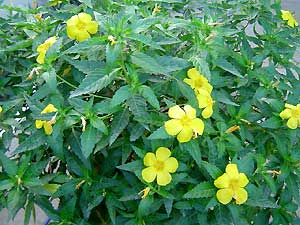 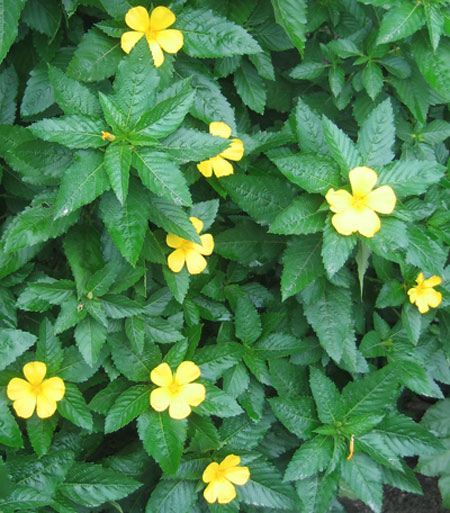 Photographed: On
the left along the stone stairway by the banana garden
at our former home in Montserrat. On the right in our garden
at Lake Atitlan in Guatemala. Photographed: On
the left along the stone stairway by the banana garden
at our former home in Montserrat. On the right in our garden
at Lake Atitlan in Guatemala. |
|||
| **Yellow Allamanda See the "A" Page -- ALLAMANDAS -- Yellow Allamanda (1) and (2) | |||
| Yellow Butterfly Ginger See the "G" Page -- GINGERS -- Yellow Butterfly Ginger | |||
|
|||
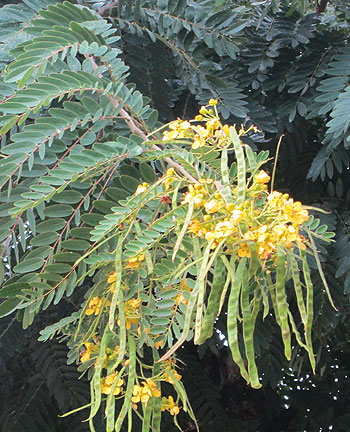 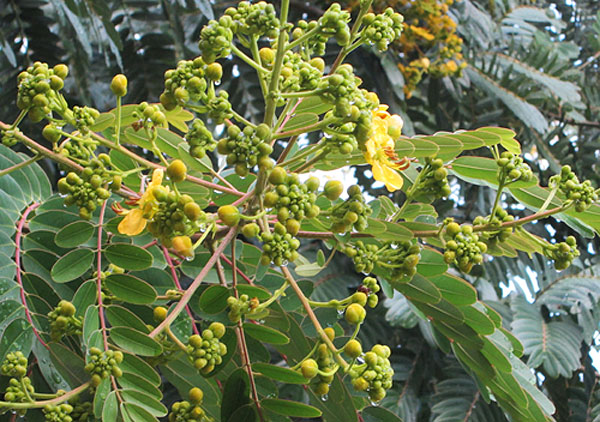 Photographed: To
the right and left in the Carlos Thays Botanical Garden
in
Buenos
Aires, Argentina, in 2010. Photographed: To
the right and left in the Carlos Thays Botanical Garden
in
Buenos
Aires, Argentina, in 2010. |
|||
Photographed:
By the side of the road in Woodlands, Montserrat,
in 2009. |
|||
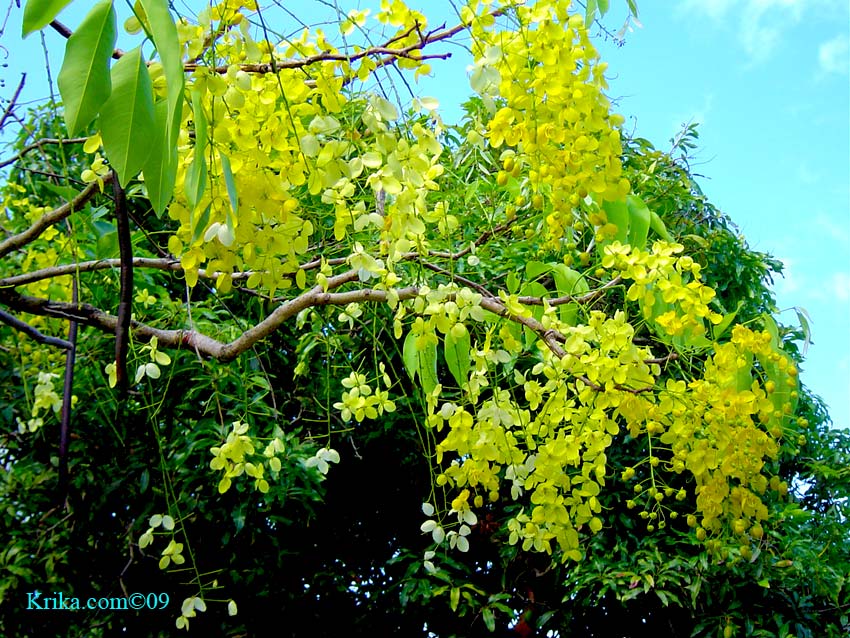 |
|||
Photographed: In the Auckland, New
Zealand, Domain
Park, 2013. |
|||
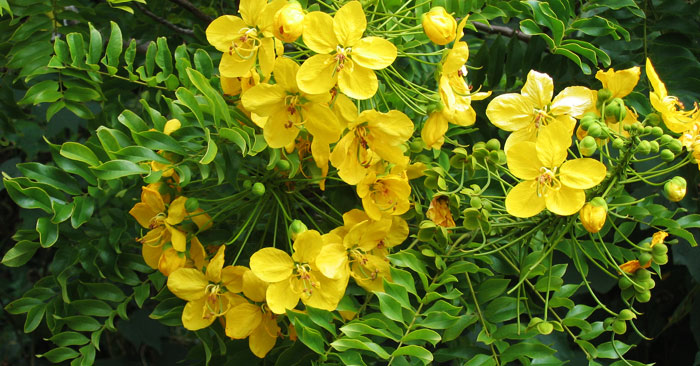 |
|||
Photographed: In
the Auckland, New Zealand, Domain Park, 2013. |
|||
|
|||
| To See Pink Cassia Trees Please Click Here | |||
If
not for its luscious yellow flowers, I would consider
this a weed tree; something to be removed so that something
better could take its place. |
|||
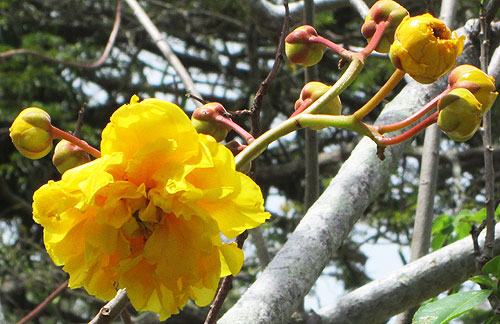 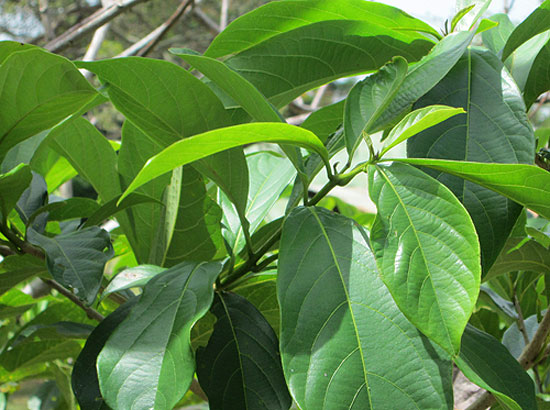 |
|||
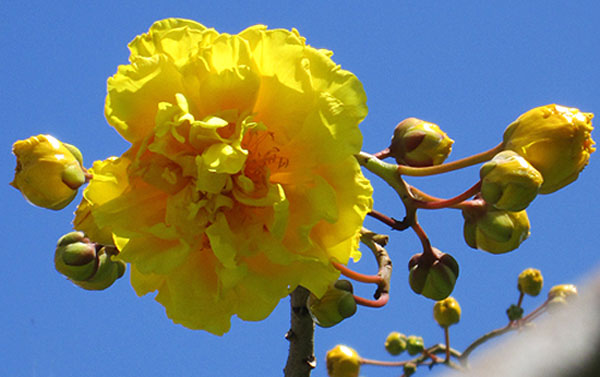 |
|||
Photographed: In
our garden at our former home in Montserrat. 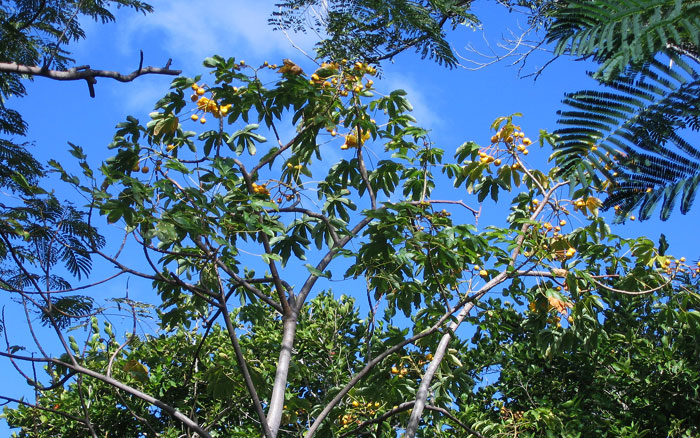 |
|||
| Yellow Jack See the "B" Page -- BRAZILIAN PLUME FLOWER (YELLOW) | |||
| Yellow Jacobinia See the "B" Page -- BRAZILIAN PLUME FLOWER (YELLOW) | |||
| **Yellow
Oleander Tree, Be-Still Tree, Lucky Nut Thevetia
peruviana syn. Cascabela thevetia or Thevetia
neriifolia This small tree grows only to about twenty-five feet and has lovely yellow trumpet-shaped flowers in full bloom in December and January and continuing throughout the year with a more modest set of blossoms. It is a fragile tree with soft wood subject to Caribbean termites and it has what I call "bad hair days." These are times when the leaves seem to shrivel and turn brown as if the tree were diseased. It isn't. Within a few weeks all the leaves are green and lush again. When we lived in Montserrat, our lucky neighbor across the street had a very unusual variety of this tree. Hers had lovely soft peach or apricot colored flowers. Apparently it also comes with white flowers, but I have never seen one of them. Benefits/Risks: From: Brazil and/or Central America Planting and Care: Plant this soft, small, delicate tree in full sun or in a bright semi shady area of the garden. Give it a moderate amount of water until it settles in and then it should do just fine on its own. It appears to be very vulnerable to termites if it is damaged in any way (wind broken branches, etc.). Warning: This small tree is very poisonous. In the town of Taxco, Guerrero, in Mexico, these trees are called yoyote. For those who know of the American silver designer William Spratling, it might be fun for you to know he carried of of the seeds of the yayote with him at all times. He believed they would cure his hemorrhoids and he promoted the seeds to one and all. Text and Photographs ©KO 2008 and GreenGardeningCookingCuring.com 2014/2018 |
|||
|
|||
|
|||
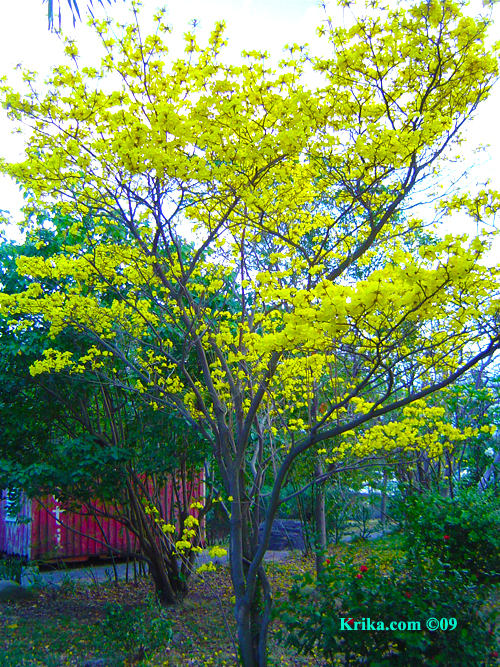 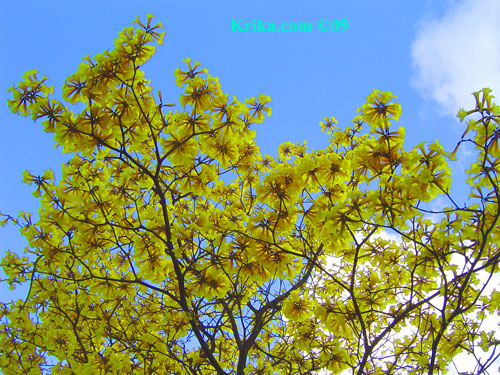 |
|||
|
|||
Yellow Rattle Shaker |
|||
| Yellow Shrimp Plant See the "S" Page SHRIMP PLANTS -- Golden Shrimp Plant | |||
| **Yellow Thistle See The "P" Page -- POPPIES - Mexican Poppy | |||
| Yesterday
Today and Tomorrow, Brazil Raintree, Morning-noon-and-night Brunfelsia
pauciflora 'Magnificent' This is a very appealing shrub or small tree. Its flowers open purple and then fade to pale lavender and eventually to white. It blooms all summer from spring straight into fall. Benefits: None found as of yet. From: Brazil Planting and Care: Plant it in bright semi shade or in a place where it will receive direct sunlight only in the early morning or late afternoon. It needs very regular watering and should never be allowed to dry out. Warning: All parts of this plant are toxic to humans and to animals. Text And Photographs ©Krika.com 2010 and GreenGardeningCookingCuring.com 2012/2018 |
|||
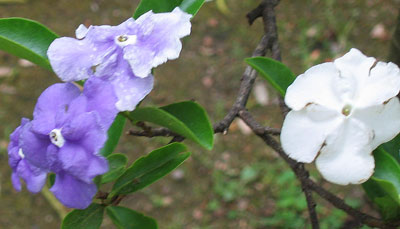 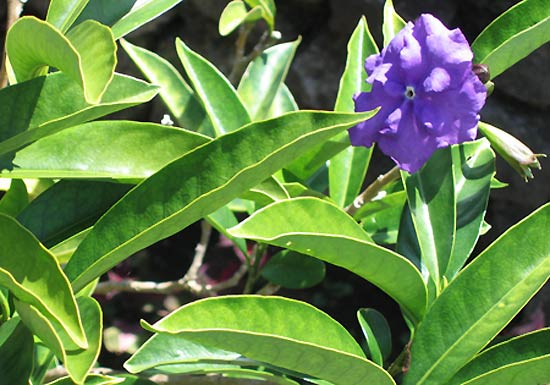 Photographed: To
the left at at the Botanical Garden in Naples, Italy, in
2012. On the right in the Botanical Garden at the Hotel
Atitlan on Lake Atitlan in Guatemala in July of 2010. Photographed: To
the left at at the Botanical Garden in Naples, Italy, in
2012. On the right in the Botanical Garden at the Hotel
Atitlan on Lake Atitlan in Guatemala in July of 2010. |
|||
Photographed: In
a street garden in
Malaga, Spain, in 2012. |
|||
YUCCA |
|||
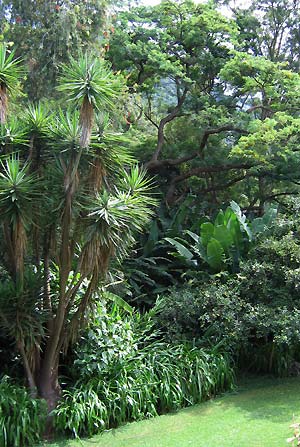 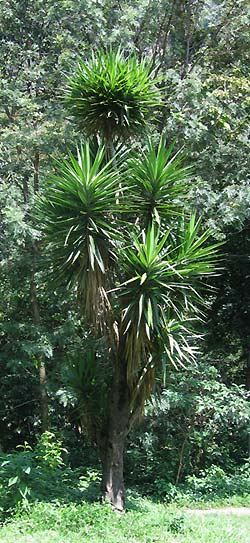 **Spineless
Yucca, Giant Yucca Yucca Guatemalensis or Yucca
gigantea **Spineless
Yucca, Giant Yucca Yucca Guatemalensis or Yucca
giganteaThis is a yucca tree which will branch and grow to about thirty feet. It has lovely large branches of creamy white flowers, but, all in all, nothing sold me on this yucca aside from its planting and care requirements. Benefits: From: Arid areas in Mexico and Central America Photographed: To the right and left at the Hotel San Buenaventura at Lake Atitlan in Guatemala, in 2008. Planting and Care: You will be hard pressed to find a more accommodating small tree. It will grow in full sun or full shade, it will grow in an acid or alkaline soil and it will survive droughts. Perhaps its last great feature for those who find themselves without food in the Caribbean is that its flowers are edible! Of course as with all other plants it will do better with a bit of care, more water and a bit of fertilizer, but it is nice to know you've got a friend when you are just too busy elsewhere. Text and Photographs ©Krika.com 2008 and ©GreenGardeningCookingCuring 2018 |
|||
|
|||
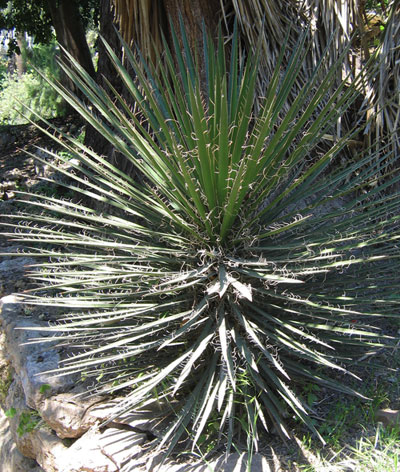 Tree
Yucca, St. Peter's Palm, Palm China Yucca
australis 'Filifera' Tree
Yucca, St. Peter's Palm, Palm China Yucca
australis 'Filifera'This is a slow grower, but it can reach a height of over 40 feet if you have a lifetime to wait. Benefits: Yucca has been used for a wide range of ailments even used externally to stimulate hair growth and diminish dandruff. From: Northern Mexican desert Photographed: In the Botanical Garden in Palermo, Sicily, in Italy in 2012. Planting and Care: As one would expect from its home base the tree yucca likes it dry and to live in full sun. It is not winter hardy. Text and Photograph ©GreenGardeningCookingCuring.com 2014/2018 |
|||
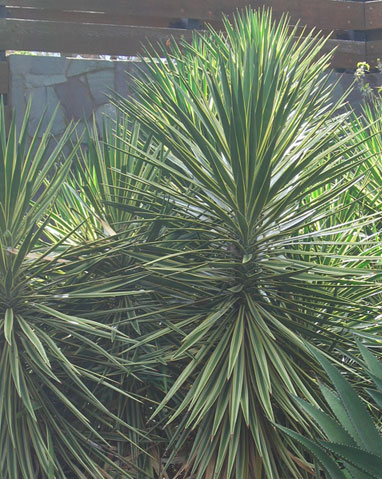 Spanish
Bayonet, Dagger Plant, Aloe Yucca Yucca
aloifolia Spanish
Bayonet, Dagger Plant, Aloe Yucca Yucca
aloifoliaBenefits: Yucca aloifolia has been used as food and for its medicinal benefits. Care must be taken when using it for food as parts of the plant contain toxins poisonous for humans unless previously baked. Its toxins were also used in stunning fish which were of course then eaten. From: The southern US, Mexico and the Caribbean West Indies Photographed: In the Royal Botanic Garden in Sydney, Australia, in 2013. Planting and Care: This yucca is especially suited to warm climate sandy beach soils. It will grow to be almost 20 feet in height before falling over and growing again from the top now on the ground. After a time it flowers with a similar appearance to other yuccas except that its flowers are tinged with purple. After flowering new shoots will appear from the base of the original plant creating a bit of a wall of yucca over time. Text and Photograph ©GreenGardeningCookingCuring.com 2014 and ©GreenGardeningCookingCuring.com 2018 |
|||
|
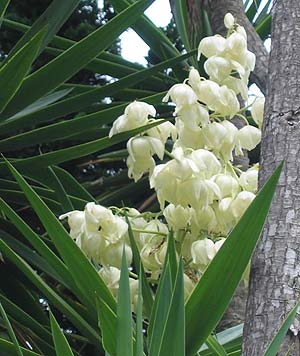
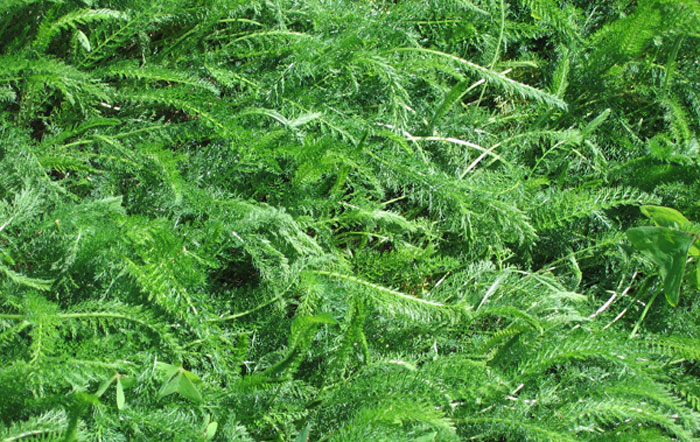
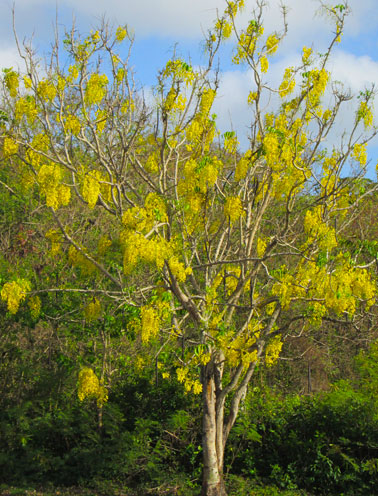
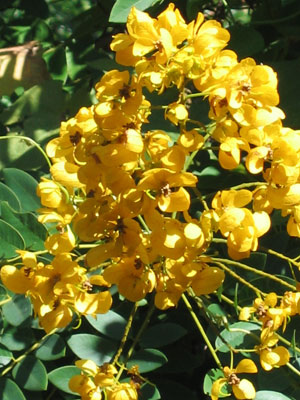
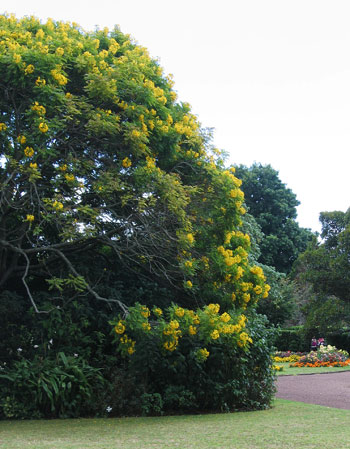
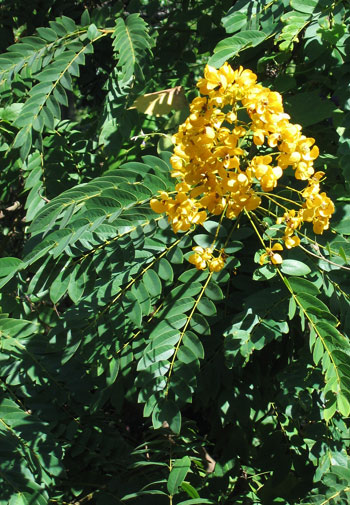
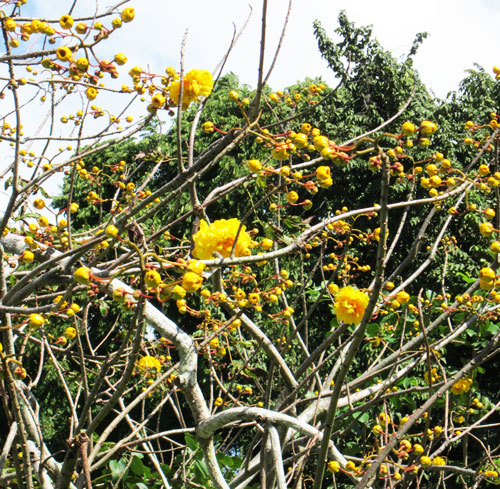
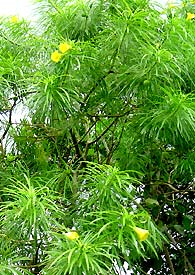
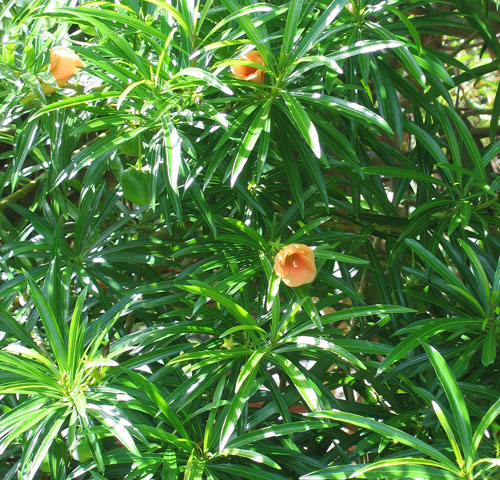 Photographed: To
the left in our garden at our former home in Montserrat.
On the right with pale peach colored flowers in the
Royal Botanic Garden in Sydney, Australia, in 2013.
Photographed: To
the left in our garden at our former home in Montserrat.
On the right with pale peach colored flowers in the
Royal Botanic Garden in Sydney, Australia, in 2013.